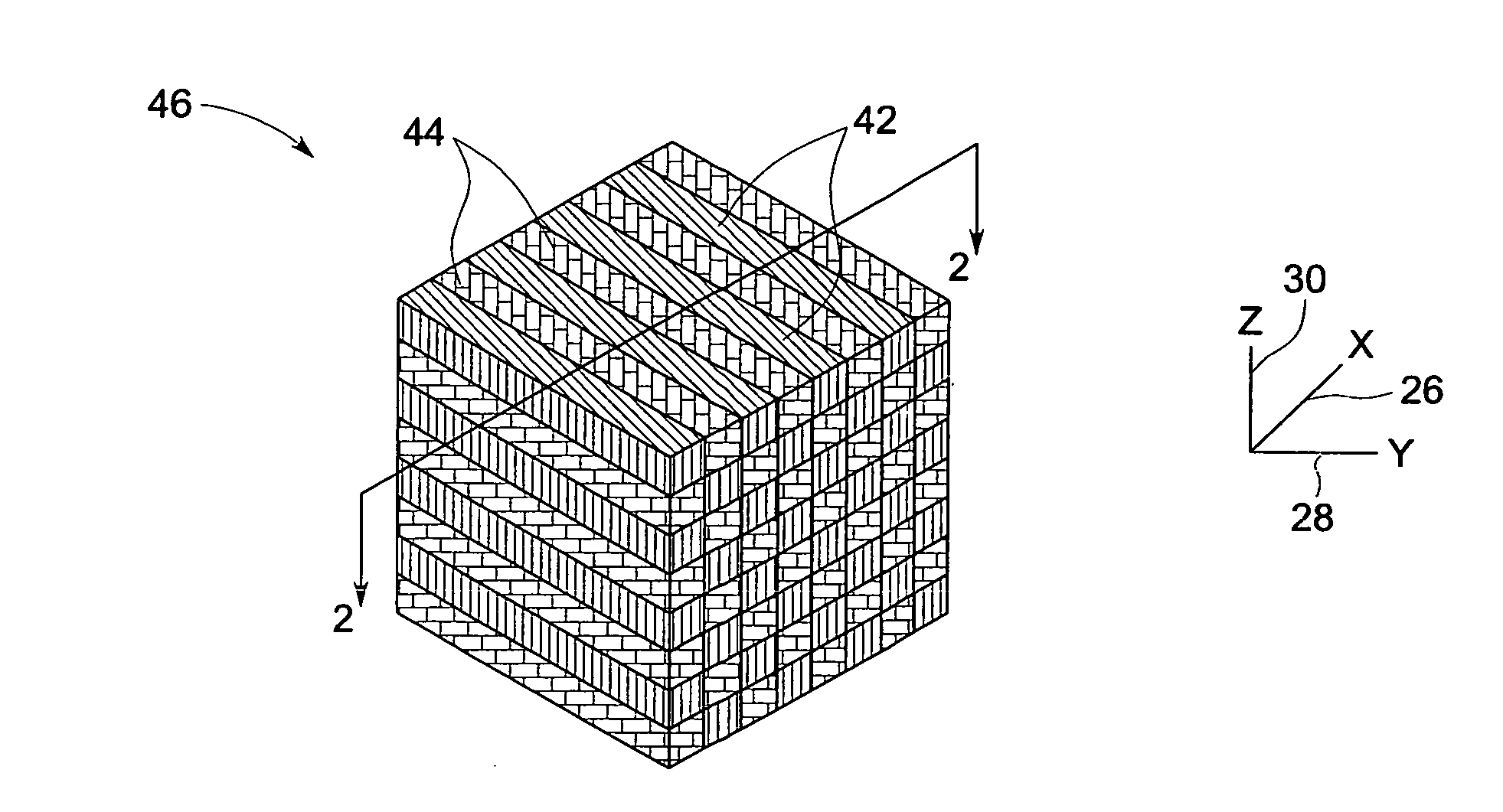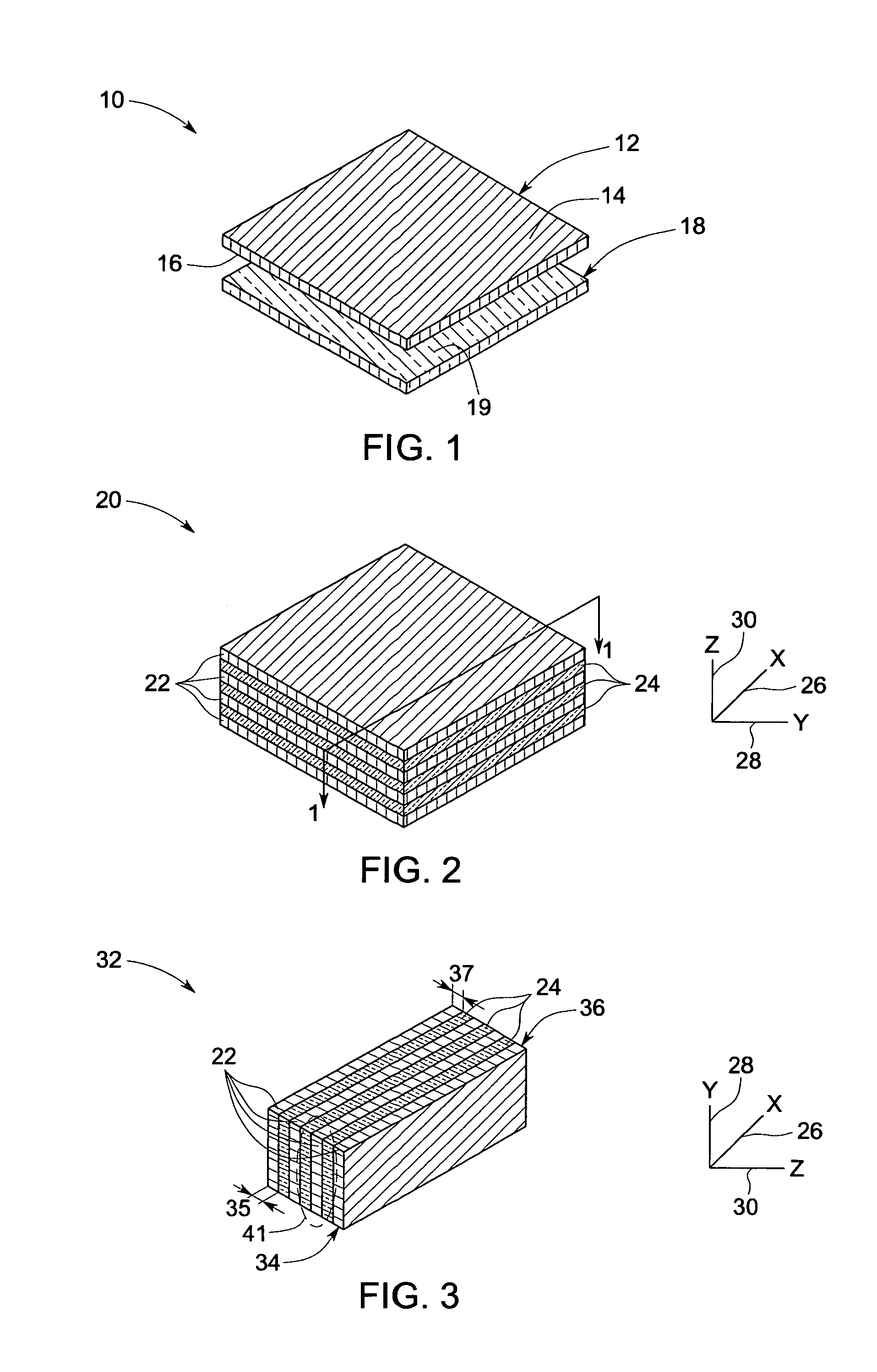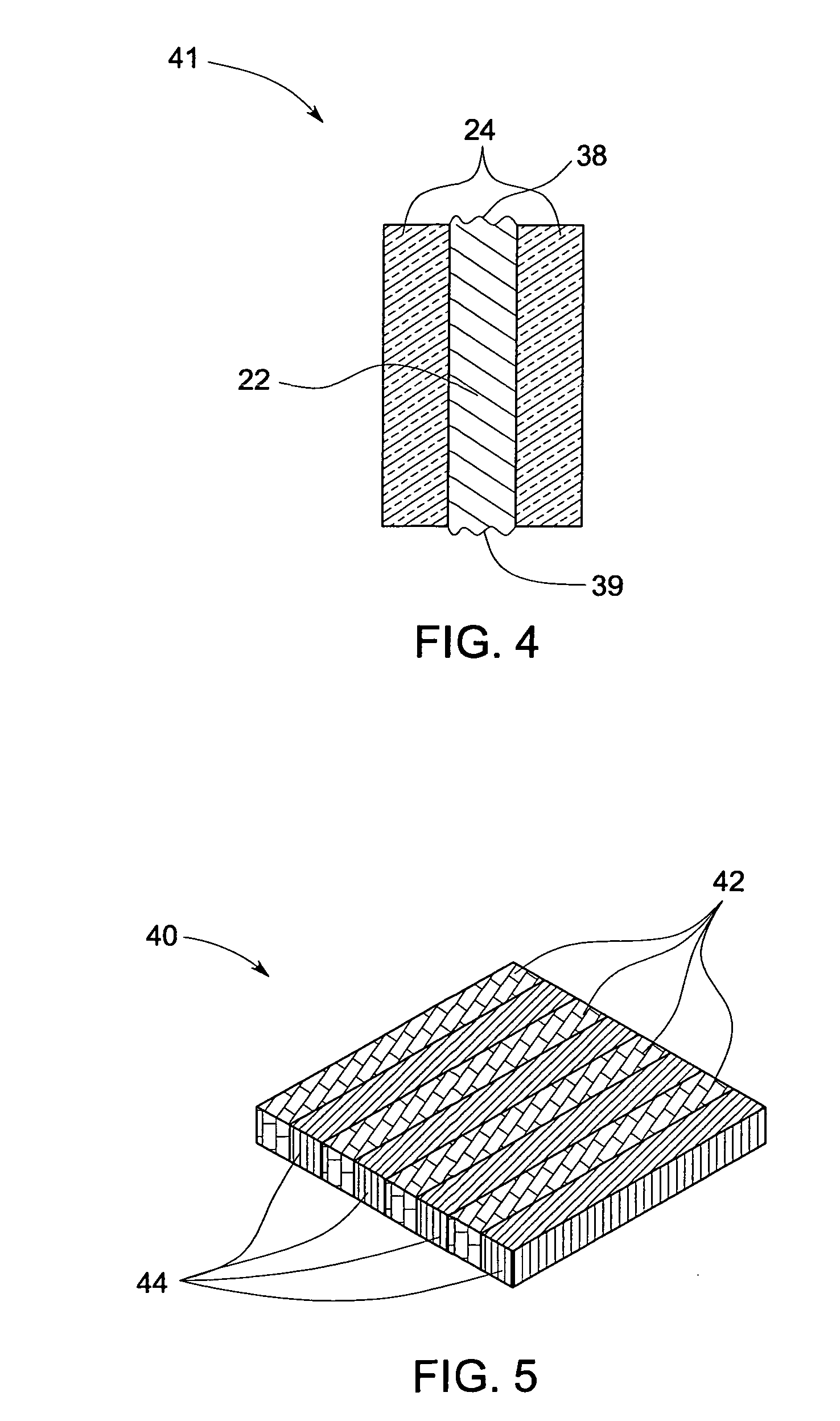Thermal transport structure and associated method
a technology of thermal transport and transport structure, applied in the direction of lighting, heating apparatus, instruments, etc., can solve the problems of reducing the thermodynamic driving force for heat removal, generating heat during operation that may need to be dissipated, etc., and achieve the effect of improving thermal transport performance and higher thermal conductivity
- Summary
- Abstract
- Description
- Claims
- Application Information
AI Technical Summary
Benefits of technology
Problems solved by technology
Method used
Image
Examples
example 1
In-Situ Thermal Characterization of Thermal Transport Structure
[0106]A resin layer is sprayed onto a sacrificial film. The resin layer is a mixture of an epoxy, RSL 1739 available from Hexion Specialty Chemicals (Houston, Tex.), and a hardener, hexahydro-4-methylphthalic anhydride available from Sigma-Aldrich (St. Louis, Mo.). The resin layer also includes a catalyst, Polycat SA-1 available from Air Products (Allentown, Pa.). Heat from a heat lamp at least partially cures the resin layer after spraying to form a film. Thermal pyrolytic graphite (TPG) bars are commercially available from GE Advanced Ceramics (Strongsville, Ohio) having dimension of 100 milimeters×100 milimeters and a thickness of about 2 milimeters are aligned on the resin layer. The thermal pyrolytic graphite (TPG) bars are aligned and areorientation such that the plane having the highest thermal conductivity is placed parallel to the sacrificial film. The process is repeated to form a stack having alternate layers ...
example 2
Effect of Thickness of Thermal Transport Layer on Interfacial Thermal Resistance
[0114]In Example 2, thermal transport structures (TTS) are prepared in the same manner as in Example 1, except that the thickness of the thermal transport layer differs from sample to sample. Samples 5-7 have thickness of 490, 500, and 100 respectively.
[0115]Aligning each of the thermal transport structures between two substrates makes a test coupon. The plane of the TTS having the highest thermal conductivity is placed perpendicular to the substrates. The first substrate is an aluminum substrate having a density of 2.63 g / cm3, heat capacity of 0.861 J / g-K, and a thermal conductivity of 130 W / m-K. The second substrate is a silicon substrate having a density of 2.33 g / cm3, heat capacity of 0.70 J / g-K, and a thermal conductivity of 135 W / m-K.
[0116]The experimental set up 102 is illustrated in FIG. 17. As with the set up 82 of FIG. 16, the set up 102 may include clamps 104 and 106. The TTS 108 is interposed...
PUM
| Property | Measurement | Unit |
|---|---|---|
| thickness | aaaaa | aaaaa |
| thickness | aaaaa | aaaaa |
| average particle diameter | aaaaa | aaaaa |
Abstract
Description
Claims
Application Information
 Login to View More
Login to View More - R&D
- Intellectual Property
- Life Sciences
- Materials
- Tech Scout
- Unparalleled Data Quality
- Higher Quality Content
- 60% Fewer Hallucinations
Browse by: Latest US Patents, China's latest patents, Technical Efficacy Thesaurus, Application Domain, Technology Topic, Popular Technical Reports.
© 2025 PatSnap. All rights reserved.Legal|Privacy policy|Modern Slavery Act Transparency Statement|Sitemap|About US| Contact US: help@patsnap.com



